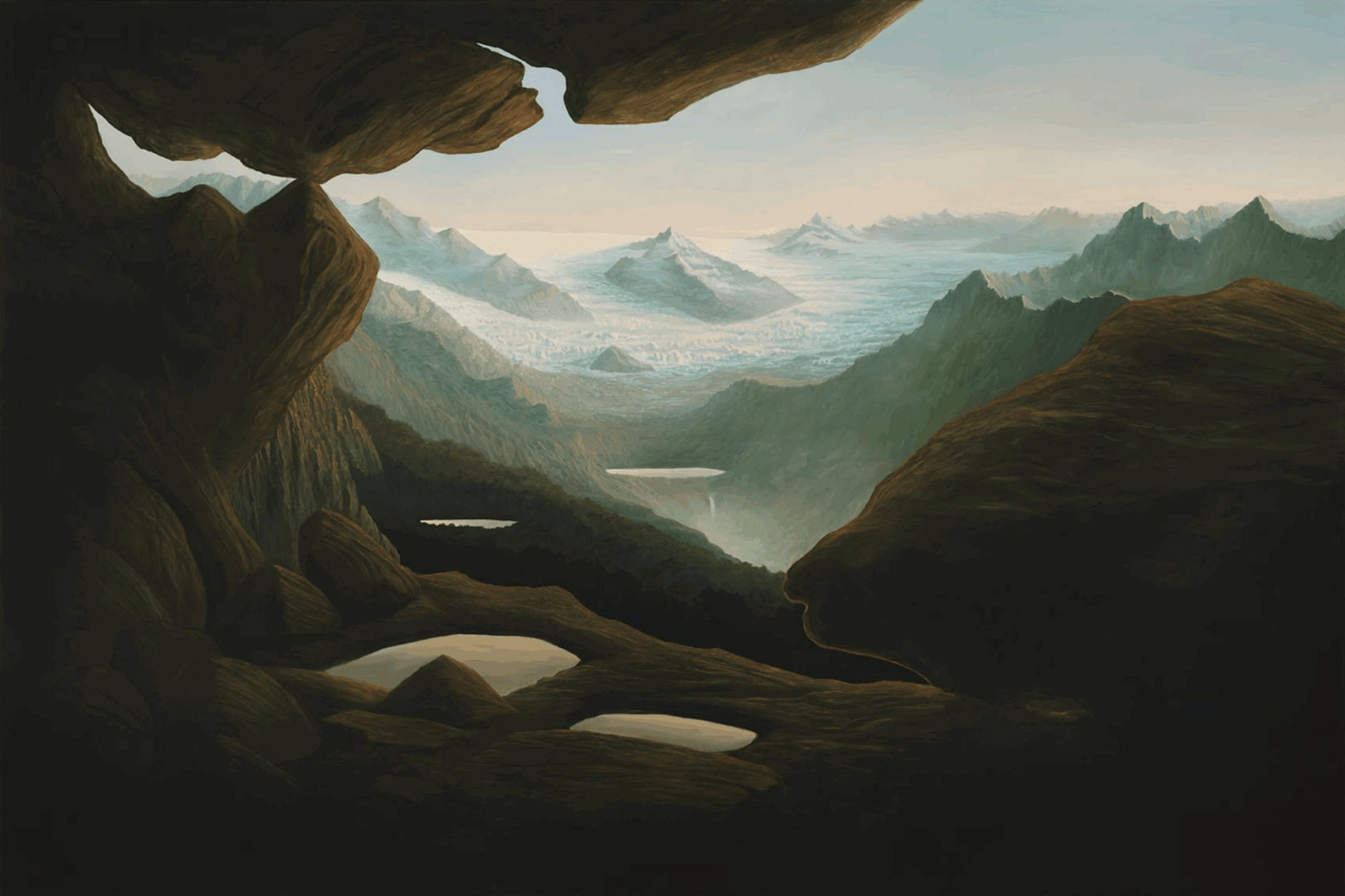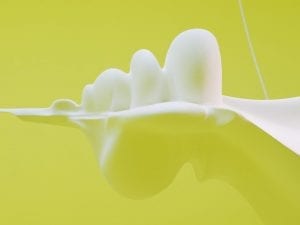The landscape has always held a central place in art. Greeks and Romans created frescoes of gardens, whilst Medieval religious paintings often used idyllic locations as a backdrop. Dutch Golden Age painters like Jacob van Ruisdael and Aelbert Cuyp made nature their subject. Landscape painting became a standalone genre, and it has remained a mainstay of the art world ever since. Fast forward to the 20th century, and pioneering figures like Ansel Adams used photography to document their surroundings, creating works that captured untouched vistas. Today, artists like Edward Burtynsky, Richard Mosse and Victoria Sambunaris are documenting climate, conflict and industry-ravaged locations. Throughout the centuries, one thing has remained a constant: in every depiction of landscape, there is a reflection of the values and beliefs of the society that created it.
Alien Shores, a new exhibition at White Cube, London, takes this idea as its core theme, examining how artists imbue the landscape with cultural meaning. The show features 35 practitioners, including household names like Anselm Kiefer, David Hockney and Georgia O’Keeffe, who grapple with humanity’s place in the world. The gallery displays these iconic figures alongside contemporary practitioners, including Alia Ahmad and Sholto Blissett. The works offer speculative, symbolic and surreal depictions of rugged terrains, using wild settings as a vessel for reckoning with the distant past or imagining possible futures. As the exhibition programme describes: “These are landscapes once removed: shaped by temporary or cultural distance, filtered through technology, mythology or abstraction. Here, the ground shifts beneath our feet and horizons stretch beyond our grasp; natural forms are reduced to geometry; matter defies its nature, as rock flows like water and earth dissolves into mist.”
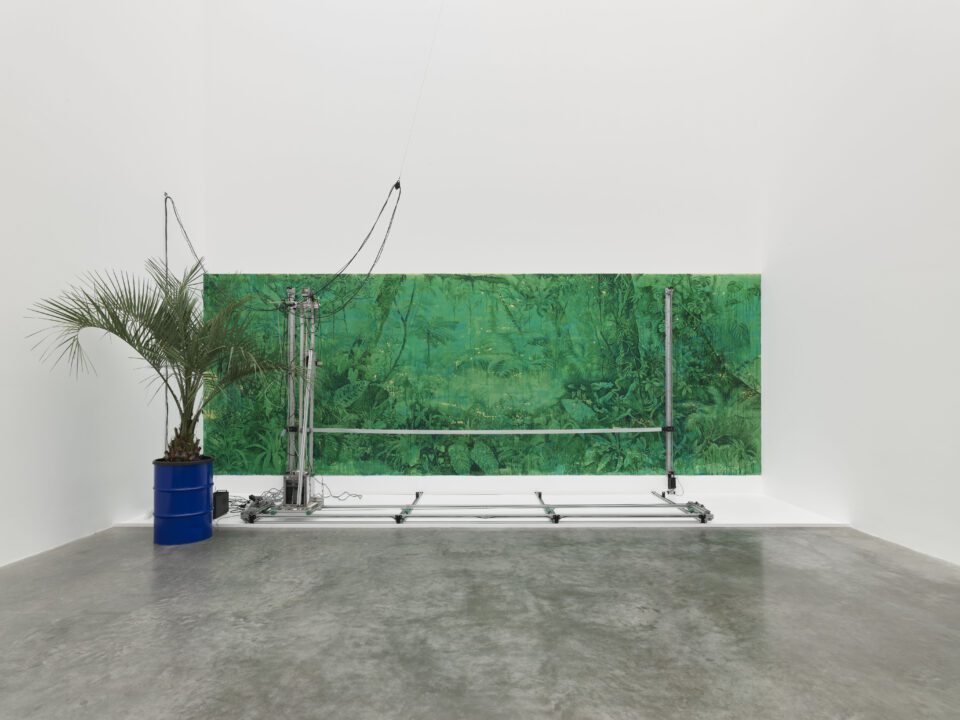
Consider our relationship to the environment today and the first thought is likely to be negative: ecological destruction, climate change, rising sea levels, overwhelming amounts of plastic pollution. The list is seemingly endless. More than this, people are increasingly disengaged from the outdoors. In fact, a 2024 study by Anglia Ruskin University placed the UK 59th out of 65 nations for exposure to, and empathy with, nature, as well as environmental concern. White Cube takes this crisis of connection as an important theme, spotlighting artists who engage with feelings of alienation, nostalgia and anxiety.
The exhibition interrogates the very definition of the word “landscape. As curator Susanna Greeves writes: “Landscape is not the world, but the world through human eyes, shaped by culture, memory and ideology. In an age of simulation and hyperreality, mediated images of nature increasingly supplant lived experience, and the wild becomes a digital backdrop; idealised, commodified.” This is reflected in the aesthetic strategies of those featured in Alien Shores, where familiar scenes are made strange. Marguerite Humeau’s large-scale abstract sculptures breathe life into lost things, whether they are lifeforms that have become extinct or ideas that have disappeared from popular imaginations. Her works range from prehistory to potential futures, creating new mythologies for contemporary audiences. Meanwhile, Brazilian painter Marina Rheingantz expands the landscape genre with works that portray spaces long since evacuated: wastelands, ruins, training fields. Also on display is works by Sholto Blissett, who centres humanity’s desire to distinguish itself from the rest of nature. He paints an uncanny realm where people are missing, instead using buildings to mark their presence. Here, society can neither escape the landscape, nor control it.
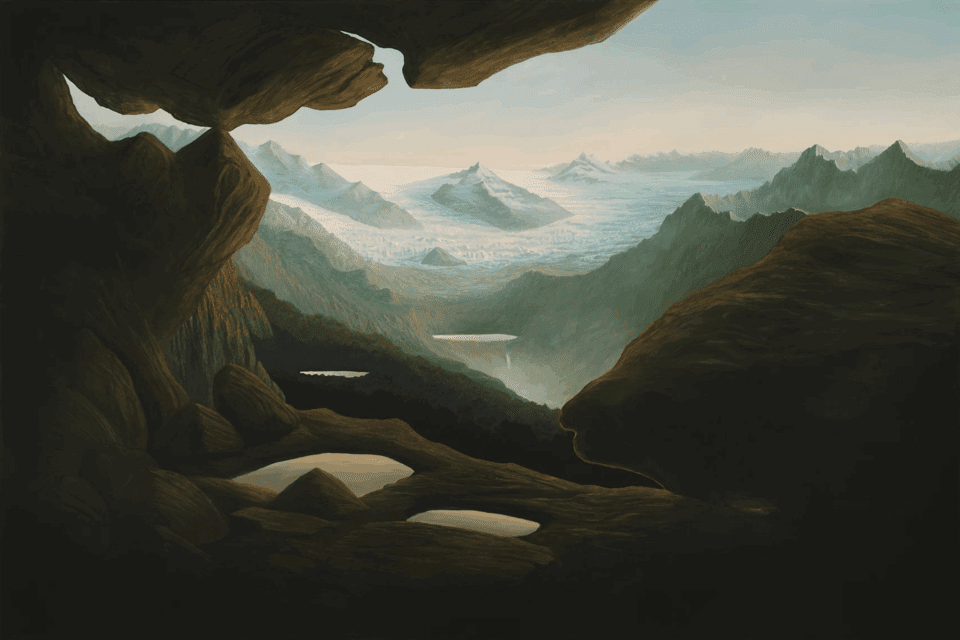
However, there is a flipside to this story, a counter-current of yearning to reconnect with a world that has grown remote and unrecognisable. The persistent tug of landscape on the creative imagination reflects how feelings of estrangement are recent, not absolute. The concept of a separateness from land and ecology is the product of modernity and, more specifically, of western imperialism. For many in the Global South, this detachment never happened. The exhibition offers a fascinating angle from which to examine the legacy of colonialism. In the face of displacement, exile, migration and the destruction of homes, a new sense of belonging emerged. It is rooted not in a specific geography, but to the cultural traditions through which place is felt and expressed. Alia Ahmad’s work explores change, adaptation and belonging. Her paintings are rooted in recollections and observations of her native Riyadh and informed by broader Saudi cultural traditions. Elsewhere, Sky Hopinka’s work across video, photo and text centres around his personal relationship to Indigenous homeland and landscapes.
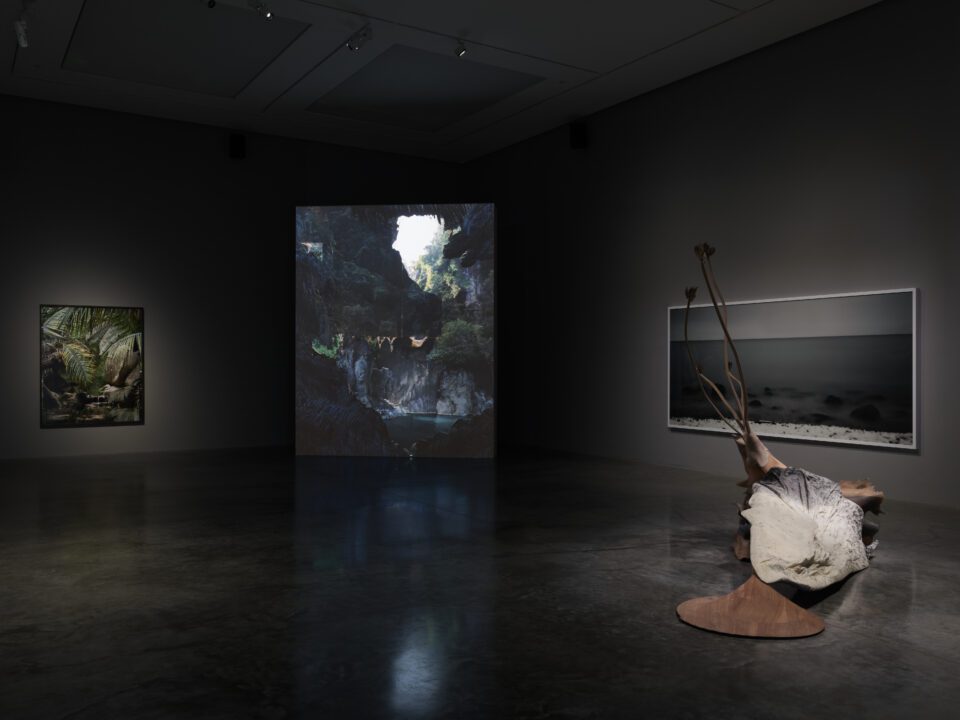
There is one conspicuous absence throughout the exhibition: humans. Yet, their presence is everywhere. Each abstract depiction of a dense jungle, every surreal vision of a desert plain, is a reflection of society’s anxieties, histories and dreams. The exhibiting artists are rooted in their specific time and place, echoing the concerns and ambitions of their context. In reaching for new forms of landscape, they grapple with a way to make sense of where we are, how we got here and where we might go next.
Alien Shores is at White Cube Bermondsey, London until 7 September: whitecube.com
Words: Emma Jacob
Image Credits:
1&3. Sholto Blissett, The White Heat of Cold Water – Cavity 2025. Oil on canvas. 200 x 300 cm | 78 3/4 x 118 1/8 in.© the artist. Photo © White Cube (Theo Christelis).
2. Bagus Pandega & Kei Imazu, Artificial Green by Nature Green 4.1 2025. Painting-and-erasing machine, water-based paint on linen canvas, modular synthesizer, LED screen, PC and jelly palm tree. Dimensions variable © Bagus Pandega & Kei Imazu. Photo © White Cube (Ollie Hammick).
4. ‘Alien Shores: landscape, once removed’ White Cube, Bermondsey. 9 July– 7 September 2025 Photo © White Cube (Ollie Hammick).


